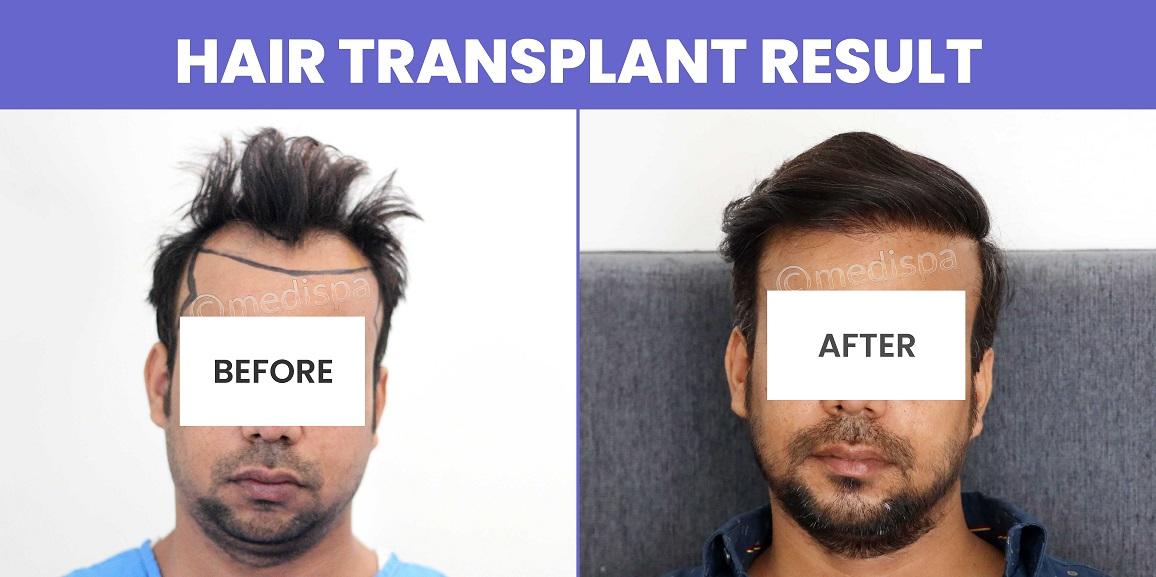
Various factors may lead to hair loss, including genetic predispositions, hormonal changes, systemic health issues, or physical trauma. Additionally, contemporary challenges such as increasing pollution, heightened stress levels, lifestyle changes, and modified dietary habits are contributing to the prevalence of hair loss in today’s fast-paced environment.
Regardless of the underlying cause, hair loss can be distressing for individuals affected by it. While most instances of hair loss are temporary and resolve spontaneously, permanent cases necessitate medical intervention.
The trend of opting for hair transplant in India as a solution for hair loss is on the rise. Alongside the growing popularity of this procedure, the costs associated with hair transplant cost in India have significantly decreased. Consequently, individuals suffering from hair loss worldwide are increasingly traveling to India for hair transplant tourism, in addition to local patients.
Medispa hair transplant clinic is recognized as one of the premier locations for hair transplant procedures. You can trust us to deliver a hair transplant experience that is both comfortable and effective. Our team has successfully treated over 10,000 patients suffering from hair loss through hair transplants. We are highly regarded for our expertise in India. Dr. Suneet Soni, one of the leading hair transplant surgeons globally, boasts more than 19 years of exceptional experience. His skills are widely acknowledged, attracting numerous specialists from around the world who come to learn the most effective hair transplant techniques.
If you are in search of the finest clinic to address your hair loss concerns, Medispa is undoubtedly the top choice.
Hair transplant procedure
The hair transplant procedure is a permanent solution for baldness. It entails the extraction of hair follicles from a donor site and their subsequent implantation into the balding areas. The selection of the donor site is based on the characteristics of the hair follicles present. The follicles harvested for this procedure are intended to be permanent, ensuring lasting results after the hair transplant.
There are two primary techniques employed in hair transplantation: the FUT and FUE methods. These techniques vary in their approach to follicle extraction and are chosen according to the specific circumstances of hair loss.
The FUT method involves the removal of a strip of tissue from the donor area, which is then divided into smaller sections to extract individual hair follicles. Each follicle is subsequently implanted into the balding region.
Conversely, the FUE method entails the individual extraction of hair follicles from the donor site. This is accomplished using a specialized punch device that is inserted to pluck out each follicle.
The entire procedure typically lasts between 4 to 9 hours per session.
Hair transplant techniques:
Two modern techniques for conducting hair transplant cosmetic surgery are distinguished by their methods of harvesting follicular grafts. These techniques include:
FUT hair transplant (Follicular Unit Transplantation or strip technique): This method entails excising a narrow strip from the donor region, typically located at the back and sides of the head. The strip is then taken to a separate area where individual “follicular units,” which consist of hair grafts encased in surrounding tissues, are meticulously separated. These individual follicular units are extracted, and the harvested grafts are subsequently implanted into the designated bald areas of the recipient. Due to the minuscule size of these grafts, which are not easily visible to the naked eye, each phase of the FUT hair transplant is conducted under high magnification to ensure accuracy and prevent damage to the roots.
In the FUE hair transplant (Follicular Unit Extraction) technique, follicular units are extracted one by one from the donor area of the scalp using a specialized tool that resembles a punch. The extracted follicular units are then inserted into the prepared incisions at the recipient site.
Recovery following hair transplant
Following a hair transplant, you should not encounter any significant inconveniences, so there is no cause for concern. While you may experience some mild swelling, tenderness, and itching, rest assured that these symptoms will subside within three to five days. It is advisable to take certain precautions during the recovery period, which is expected to last between seven to ten days. With appropriate care, you can return to your regular activities as early as the day after the procedure; however, it is recommended to take a few days off for optimal recovery. Consequently, a hair transplant can be accommodated even within a busy and fast-paced lifestyle.
Advantages of hair transplant
The process of hair transplantation offers numerous advantages. Below are some of the most notable benefits:
- Hair transplants yield permanent results. The longevity of these results largely depends on the expertise of the doctor and the medical team conducting the procedure, as only the roots of permanent hair are utilized for transplantation.
- The outcomes of hair transplants appear remarkably natural. The procedure employs your own hair, ensuring that the results blend seamlessly and exhibit natural growth patterns.
- The hair transplantation process is devoid of pain. Local anesthesia is administered to ensure a comfortable experience throughout the procedure.
- Once the hair is transplanted, it will grow in a manner similar to natural hair, eliminating the need for special maintenance.
- The expense associated with hair transplants is relatively low. In India, the cost is approximately 5 to 6 times less than in many other countries.
- Hair transplants can facilitate optimal hair growth, provided there is an adequate supply of hair in the donor area to achieve the desired results.







